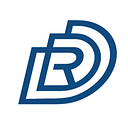DREP DID: the Essence of Web 3.0 Socialization in DeSoc
How fast are things evolving in Web3? From 0.09E to 7.6E, it took goblintown only 11 days. Just overnight, Jack Dorsey’s Web5 idea has already stolen the thunder of Web3. Not many of us have had a clue on what web5 is yet, but in Dorsey’s documentation there are some points that coincide with what DREP is consistently developing: DID (Decentralized Identifier).
A DID is a indentifier that is registered cryptographically and does not require a centralized authority. DREP DID was originally proposed to solve the private problem in DeFi investment, by accumulating users’ credit data from their past transaction history across fragmented platforms. Growing with the ever-changing Web3, DREP DID usercase has now stretched beyond DeFi and towards the notion of Decentralized Society (DeSoc) in Web3.
How will DREP DID play its role in Web3.0-type socialization? For starters, we need to look at how socialization in Web2 and Web3 differs.
Social in Web3.0
Traditional Web2 social platforms, such as facebook, Twitter or others, feature a highly centralized administration where the platform has the right to manage users’ account, access their history, store their data and feed them personalized content. Although users are able to make profits through generating content, most of the income goes to the platform. Even though you are just using the platform, your data might be secretly stored, used and even sold without your knowledge. Your customized feeds are sophisticatedly calculated by intelligent algorithm and what you read is probably manipulated by the platform. Many has realized the drawbacks in Web2 social media and are seeking a solution in crypto world, directing to the advent of DeSoc in Web3.
The core of Web3-type socialization lies in decentralization, which allows users to be the dominant power in their digital space instead of the platform being central. Users can spread information, generate content as they like without the platform taking away the most profits. Novel SocialFi ideas, such as write to earn or social to earn allows user-generated content (UGC) to prosper and creators get rewards of what their creativity deserves. More interestingly, platform promoted advertisements will be replaced by word of mouth, through communities such as Decentralized Autonomous Organizations (DAOs). Most importantly, privacy is ensured. In crypto world, users can choose to keep all their info in confidential and their data will be securely stored in DIDs, to avoid them being used by a third party without your permission.
DREP DID to empower DeSoc
Considering the decentralized feature of DeSoc, there’s another issue to be solved: identity — not ‘who you are’, but ‘are you trustworthy’. Since in Web2, the platform has taken the responsibility to filter possible spams and ensure a trusted environment, but in Web3, DeSoc is much more reliable on DID to bring confidence in socialization.
DREP DID offers multi-chain interoperability, where users can realize one-stop account management, multiple wallet addresses linked to one ID and swap without exchange fee. In addition, DREP DID encompasses user-generated digital images across different platforms, allowing users to display an integrated information to build their user profile. It’s worth mentioning that based on DREP’s digital DID privacy protection technology and zero knowledge proof, users will enjoy a secure environment, while they do have the ownership over their data, and can choose whether to entrust a third party.
DREP DID can also facilitate centralized social platforms’s adaptation to DeSoc. Traditional platforms cam enjoy asset integration and encryption of information through DREP DID without interfering the existing numerical system, loyalty point system or other aspects of the original platform, to transform into an interconnected decentralized ecosystem.
DREP DID x SocialFi: the future of Web3
In Web3 era, newly launched projects or NFTs depend on user adoption and engagement, therefore socializing will largely contributes to the popularity of projects. DAO, for instance, is the most popular type of community in Web3. As DAO memebers manage the community mostly through voting, it is important to decide whose vote matters more, and DID will become a fundamental element.
DID will also be an indicator of whether a person is creditable, especially as individual NFT artists increase and individual-centered DAO popularizes, user profile displayed in their DID will be the major source of self-marketing. DREP DID will continue upgrading and adapting to support and safeguard SocialFi in Web3.
As Vitalik suggested in his paper Decentralized Society: Finding Web3’s Soul, DeSoc is the future of Web3, while the essence of DeSoc relies on identity and social relationship of trust. DREP DID has already been a helpful tool in DeFi, and in the future, DREP will definitely exert its influence on SocialFi and extend its credit utility to other areas such as NFT credit data base and GameFi credit verification system.
For more information,
Telegram group: https://t.me/drep_foundation
DREP Twitter: https://twitter.com/DrepOfficial
DREP Official Website: https://www.drep.org/
DREP Crossing: https://www.crossing.network
